As the capital of China, Beijing blends ancient culture with modern advancements. The town is set to become even more enriching in 2025 as tourism increases while retaining core cultural values. Tourists are guaranteed the time of their lives as Beijing showcases everything from astonishing towering construction to historical sites. In this blog, I will discuss the most iconic locations in Beijing that exemplify the Chinese heritage, making every tourist’s visit worthwhile.
What Are the Top Historical Beijing Tourist Attractions You Shouldn’t Miss?
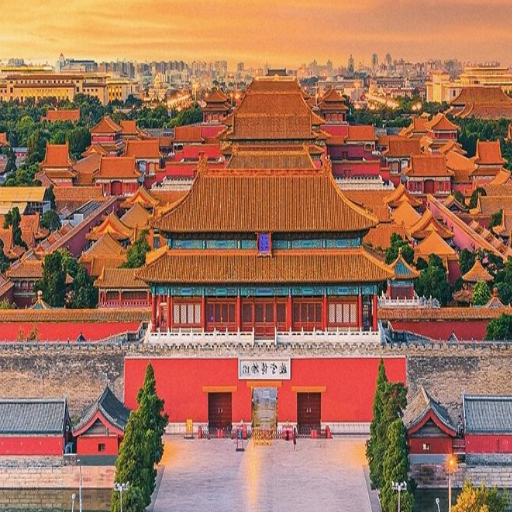
Exploring the Magnificent Forbidden City: Home of Ming and Qing Dynasty Emperors
The Forbidden City is a remarkable site where ancient Chinese architecture is given justice. It is located right in the heart of Beijing and is famous worldwide, as one of the most extraordinary historical landmarks. The palace served as the imperial palace to over 24 emperors during the Ming and Qing dynasties, as it was built between 1406 and 1420 during the reign of Emperor Yongle of the Ming Dynasty. The borders of the complex stretch an impressive 720,000 meters, along with outstanding designs incorporating feng shui. The complex also contains 9,000 stunning rooms and relics.
Dimensions: The complex is approximately 961 meters long and 753 meters wide.
The Main Halls were the Hall of Supreme Harmony, the Hall of Central Harmony, and the Hall of Preserving Harmony, which were also used administratively and for ceremonial purposes.
Materials: The entire structure was built with wood, glass, and tile. It is also decorated with heritage carvings and golden imperials, which symbolize power.
Layout Justification: From a Chinese cosmology point of view, it justifies the divine and imperial order.
When you visit, seeing the grandeur of imperial China firsthand will feel like nothing you’ve experienced. To truly embrace everything this UNESCO World Heritage citadel offers, you must spend a half day or more.
Walking the Great Wall of China: Choosing Between Mutianyu and Badaling Sections
A tour of China is not complete without a peek at the Great Wall of China, and it’s up to personal preferences and style to decide whether the Mutianyu or Badaling section is better. Here is a summary comparison:
Mutianyu Section:
Crowd Levels: Having low people flow, this section suits those searching for peace and tranquility.
Scenery: As forests flank it, it has breathtaking views.
Accessibility: It is a little further away from Beijing (around 43 miles/70 km, about 1.5-2 hours drive).
Hiking Difficulty: Intermediate. It’s not the easiest hike, but it’s not the hardest either because this section has some maintained paths and less steep elevations.
Features: The section has a cable car for ease and a toboggan for fun.
Badaling Section:
Crowd Levels: The most visited compared to others; often very busy during high times.
Scenery: Known for its impressive beauty, this section has famous portions of the wall that show exceptional structure and design because they are well preserved.
Accessibility: This is nearer to Beijing (approximately 37 miles/60 km, 1-1.5 hour drive or train ride).
Hiking Difficulty: Low-Moderate; the extensive paths most commonly traveled are in good form and designed for novices, parents with little children, and elderly folks.
Features: This part is reached by public transport; ordinary buses and trains departing from Beijing load up passengers there.
If serenity and picturesque scenery are your top priorities, Mutianyu would be the best choice. However, if you are looking for convenience and an iconic view, Badaling perfectly meets those needs. Which one do you prefer? Both sections wonderfully represent the spirit and history of the Great Wall.
Temple of Heaven: Understanding Ancient Imperial Rituals and Architecture
The magnificence of ancient Chinese architecture can be admired at the Temple of Heaven, which lies somewhere in southern Beijing. This site was built in the 15th century, during the Ming Dynasty era. It was used as a ceremonial temple for praying and offering good harvest blessings from emperors during the later periods. This sacred place became a UNESCO heritage site in the modern era and features a lot of reflection aims in their designs;
Philosophical and celestial significance: The ancient Chinese believed heaven and earth must coexist harmoniously. This belief can be seen in the architectural format layout (circular and square motifs) of the Temple of Heaven, which symbolizes heaven and earth melding together. The striking triple-gabled roof known as The Hall of Prayer for Good Harvests is the other stunning symbolism, arguably the most famous feature.
Feature construction: The structures were built using wood, showcasing the ingenuity of the skilled craftsmen in that era, who astonishingly managed to build without nails. Another fascinating concept is seen in the Hall of Prayer, which astonishingly uses 28 wooden pillars that symbolize the divisions of a year and the universe.
Acoustic performance: The Chinese seemingly mastered ancient mathematics through The Echo Wall and The Triple Sound Stones, shaping sound-amplifying features effortlessly. These stunning designs truly represent how far Chinese Acoustics advanced.
These features reveal the ancients’ building skills and deep religious convictions during China’s heyday. This venue allows for a rare insight into the buildings and culture of the epoch.
How to Experience Beijing’s Summer Palace and Imperial Gardens?
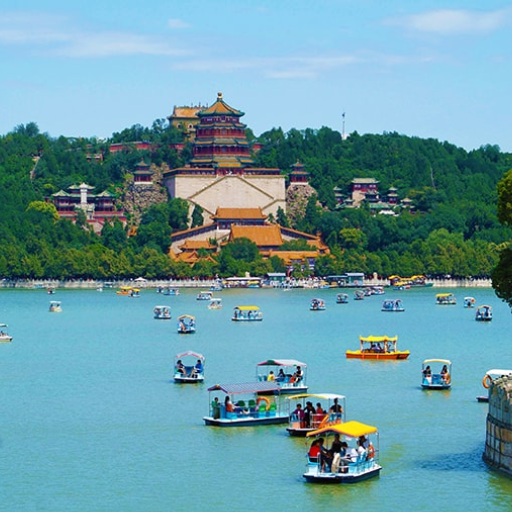
Summer Palace: Navigating the Vast Palace Complex and Kunming Lake
The summer palace is the last stop, and to get there, you must first work through the complex that contains the palace. This alone takes approximately 3 hours, and the palace is divided into three main parts. Kunming Lake should never be missed, as this is one of the biggest man-made lakes in the entire region and is a habitat for numerous species. Lastly, don’t miss the incredible views from the Tower of Buddhist Incense, which stands at an astonishing 41 meters and boasts stunning views over the lake.
After this, it’s also worth pondering renting a traditional boat to glide over the calm waters of Kunming Lake. You can admire traditional Chinese art while taking a leisurely stroll along the long corridor, which is adorned with intricate paintings and stretches 728 meters. Design principles for this lovely lake were also borrowed from the stunning Hangzhou West Lake to allow it to appeal to China’s national beautification ideals.
Reducing anthropogenic light pollution is essential to achieving the most immersive experience possible. So plan your trip for early mornings or late afternoons.
Beihai Park: One of Beijing’s Most Ancient Imperial Gardens
Beihai Park is one of the oldest and best-preserved imperial gardens in Beijing in terms of its cultural and historical value. The park houses stunning Chinese garden sculptures that blend natural scenery and beautifully constructed pavilions, temples, and corridors. Covering over 171 acres (69 hectares), the park features White Dagoba, the most well-known symbol of Buddhism and harmony. Panoramic views from Jade Flower Island are splendid as well. The feng shui of the park also incorporates water, hills, and plants with architecture and enhances the surrounding beauty to create serenity.
The history of this park stretches back over a thousand years, as it was used as an imperial vacation spot during the reigns of Liao, Jin, Yuan, Ming, and Qing. In addition to the Nine Dragon Screen, Beihai Park also features the Five Dragon Pavillion, which are riverside buildings where Emperors were entertained. All of these remarkably depict the skills mastered by ancient China in engineering and art.
If you intend to visit the site, you should ideally set aside half of your day to appreciate the beauty of the site and its historical significance. We recommend starting your visits in the morning or late afternoons as there is minimal congestion at these times, providing the opportunity for stunning photography. Maybe rent a boat to appreciate better the lake’s calm waters within the park. With exquisite design, intricate culture, and an unmatched depth of beauty, Beihai Park serves as the perfect perspective towards the magnificence of Imperial China.
Jingshan Park: The Perfect Spot for Panoramic Views of the Forbidden City
Jingshan Park is north of the Forbidden City, providing visitors with the best view of the Imperial Palace. This former imperial garden includes the Wanchun Pavilion, located at the highest point of central Beijing, which provides a panoramic view of the city. Visitors can see the symmetrical structure of the Forbidden City and the city in the background.
Make sure to check the weather, as clear conditions provide the best views. Early morning and late afternoons are often recommended when the sun enhances the view and can help you with fantastic photography. Entrance is inexpensive, and numerous bus and subway stations are nearby, making the park easy to get to by public transport. Jingshan Park not only supplies a visual treat but also gives a better understanding of the principles of traditional Chinese landscape design.
What Cultural Experiences Should Be Included in Your Beijing Itinerary?
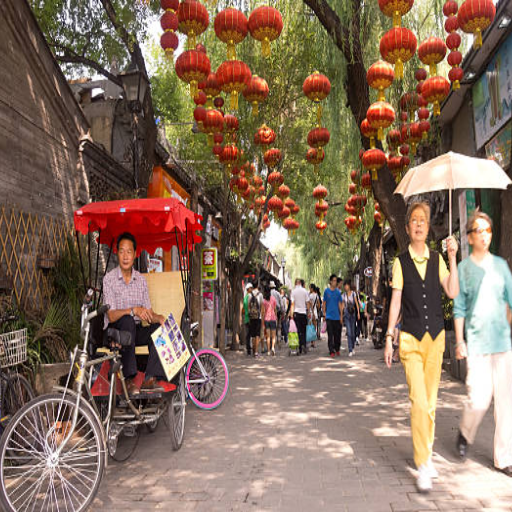
Hutong Adventures: Discovering Old Beijing in Traditional Courtyard Neighborhoods
A visit to Beijing is incomplete without exploring its scenic hutongs. The narrow streets lined with traditional courtyard houses are one of the few remaining sites in the capital that showcase old Beijing’s historical and cultural beauty. While planning your visit to the hutongs, visit Nanluoguxiang and Yandaixie Street, as they have plenty of local shops and restaurants.
If you want more authenticity, you could also try the guided rickshaw rides, which last about 1 – 2 hours. They go through the neighborhood while explaining its history and culture. Comfortable sneakers are a must, as the hutongs are often riddled with rugged patches. Walking in these areas during the early morning or evening lets you capture photographs of the soft lighting and hustle and bustle of people going about their day.
798 Art District: Exploring Beijing’s Modern Art Gallery Scene
While exploring the 798 Art District, I was amazed by the stunning modern art galleries and the alluring industrial charm of the repurposed factory buildings. The flow of creativity in this area is inspiring, and it contains everything from breathtaking photography exhibits to avant-garde sculptures. If you’re planning to swear into this area, I would suggest scheduling at least half a day to fully immerse yourself. Be sure to wear some comfortable shoes because you’ll be doing a lot of walking.
Also, be sure to check the rates and opening hours, because many galleries charge entry fees worth noting and have specific hours. Lastly, for outdoor photographers, the lighting conditions vary on the time of day, so great natural light for aesthetic shots is available without being too harsh in the late afternoon. The varying weather and a mix of outdoor and indoor spaces also impact whether or not you can visit.
Nanluoguxiang: Shopping and Cafes in a Historic Beijing Setting
Nanluoguxiang is probably the place I most look forward to visiting in Beijing because it offers a fantastic mix of history, shopping at boutique stores, and beautiful cafes. In my personal experience, I recommend visiting during early afternoons when the place is relatively less crowded, and you can stroll through the narrow alleys that are characteristic of this district. As far as shopping goes, numerous boutiques offer a variety of goods, including traditional Chinese crafts and modern handmade jewelry. And, if you love coffee, like me, these cafes have a welcoming combination of Chinese and foreign tastes, with many of them being great for relaxing after walking around.
Regarding their specific features, photography here is more challenging due to the lighting conditions, which vary depending on the time of visit. Early afternoons offer gentler lighting, better for photographing charming historic buildings without blowing them out. When considering weather factors, I would say spring and autumn are the most enjoyable seasons to visit because of the milder temperatures and clearer skies, which allow for both shopping and enjoying the atmosphere. This makes the visit to Nanluoguxiang more memorable and worth it.
What Places Around Beijing Are Worth a Day Trip?
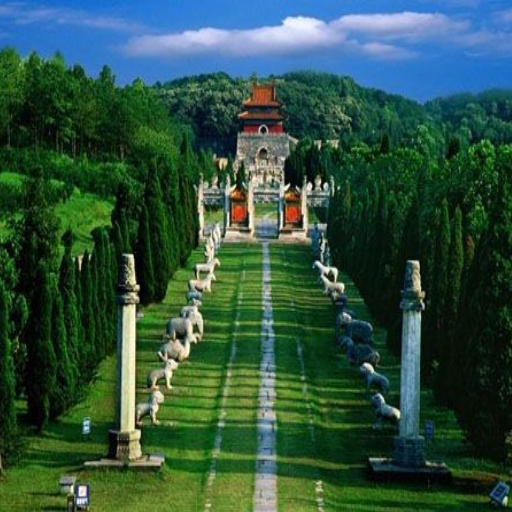
Ming Tombs: Discovering the Final Resting Place of 13 Ming Dynasty Emperors
Located roughly 50 kilometers north of Beijing, the Ming Tombs are a picturesque one-day trip. For the 13 emperors of the Ming dynasty, a striking holy site was set up for their final resting place, which showcases China’s culture and history through its impressive architecture. In my experience, the site is best visited around 8 AM since I could enjoy the tranquility with minimal people around.
If you are planning a trip, some essential factors must be considered. Wear comfortable shoes as the area requires a lot of walking. The Ming Tombs cost around ¥60, which is reasonable given that you can visit key sites such as the Sacred Way and Dingling and Changling. Moreover, having a private car is recommended since public transport has a reputation for taking a lot of time to get there. The Ming Tombs are an excellent getaway from the fast-paced environment of the city while serving as a location to deepen your cultural knowledge.
Great Wall Sections Near Beijing: Beyond the Tourist Crowds
During my trip to Beijing, I would also like to suggest exploring Jiankou, Simatai, or Gubeikou, as they are less popular than the infamous Badaling section. These sections and the other two are far less crowded and offer a more serene experience. Adventure seekers will love Jiankou as its ruggedness, and the rest of nature is still perfect for photography opportunities. Simatai’s partial restoration allows nightly illumination, making it a fascinating option for evening trips. Lastly, Gubeikou and his unbothered ruins make for a rich historical experience, which adds to the defensive importance of Gubeikou.
Such sections differ in terms of accessibility and other parameters. The more untouched areas of Jiankou come at the cost of requiring a higher skill level in hiking due to its steep and rugged areas, meaning that wearing good hiking boots is paramount. For families, Simatai offers more accessibility as it has a cable car. Similar to Gubeikou, Simatai also involves gentle hiking, which allows for better accessibility but requires good walking shoes. Exploring these certain sections provides a great perspective of the wall while relieving the tourist-heavy areas.
How to Navigate Beijing’s Food Scene and Night Markets?
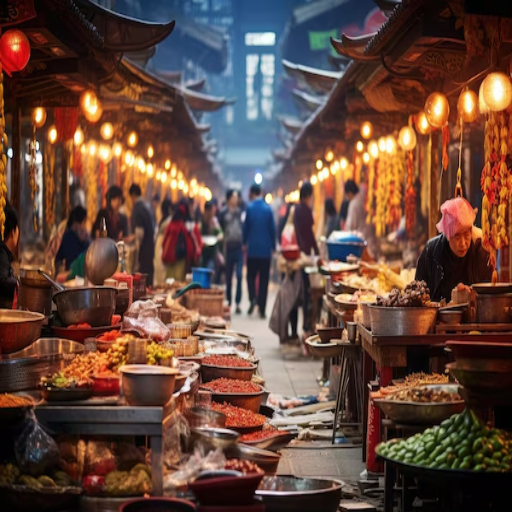
Wangfujing Night Market: Sampling Traditional and Exotic Street Foods
While wandering around Wangfujing Night Market, I experienced firsthand the rich flavor diversity of Beijing. The stalls’ offerings ranged from traditional starfish and scorpion skewers and dumplings to exotic delicacies. The organized structure of the stalls made them easy to navigate, and the market was relatively cheaper in comparison to other places. Most vendors, however, preferred cash payments, which I came prepared with.
There are a few things worth noting. However, the market opens in the late afternoon and closes in the evening, making timing your visit crucial. In addition, peak hours tend to attract more customers; therefore, visiting earlier in the evening might be better. Lastly, basic food safety practices, like ensuring freshly cooked food, are key to thoroughly enjoying it without worrying.
Best Beijing Duck Restaurants and Local Cuisine Experiences
After trying authentic Beijing duck and local food, I suggest some places that stand out. One of my favorite commands is Da Dong Roast Duck Restaurant, which has everything from the skin being crispy to the duck meat and the skin being lean. The duck has flavor while also considering health factors, which is an outstanding balance. They also provide calorie details with duck meat, a great touch for health-focused diners.
Quanjude is an iconic restaurant in China that has been around for over a hundred years and offers a more authentic experience of eating Beijing duck. Their food is very tasty, but I do worry about the breach of health standards. They use huge wood-fire ovens to bake the duck meat, but after cooking, there is too much oil flavor, so it manages to get burnt. The duck might taste better, but logically, it is a little gross to health.
If you are looking for something a little more modern, try Jing Yaa Tang. They mix traditional Chinese flavor with modern presentation styles, providing a fresh new experience for the whole class.
Don’t fret about portions or pricing, as most restaurants offer better solutions like small or pouch servings. All of my places use fresh products; no matter who you are, there is something for everyone.
Frequently Asked Questions (FAQs)
Q: What places in Beijing best represent the Chinese way of life and culture?
A: China has a rich history, and Beijing is home to many sites emblematic of this culture; one of these sites is the Forbidden City or the Palace Museum, the largest palace complex in the world. Within the city, there is also the Temple of Heaven, which showcases ancient Chinese religious worship. The Summer Palace, with its Longevity Hill and Kunming Lake, is another classical garden that represents Chinese garden designs. The Olympic Park, built for the Beijing Olympic Games 2008, is a modern representation of Beijing. Those wanting to delve deeper into understanding Chinese culture must visit the National Museum of China, as it provides excellent historical information. These sites form the must-see parts of Beijing and should be included in any itinerary list.
Q: Should I allocate time to visit Tiananmen Square during my stay in Beijing?
A: Certainly! For anyone wanting to understand the People’s Republic of China, Tiananmen Square is one of Beijing’s most prominent places to visit. As the most significant public square in the world, it is surrounded by essential landmarks like The Monument to the People’s Heroes, the Great Hall of the People, the National Museum of China, and Mao Zedong’s Mausoleum. For many people, the most touching moment is the flag-raising ceremony at sunrise; observing that is priceless. During your travels to Beijing, this iconic site is a cornerstone of China’s modern history, and its proximity to other attractions makes it a convenient stop for your day tours of Beijing.
Q: What makes the Lama Temple one of a kind in terms of other religious places in Beijing?
A: The Lama Temple (or Yonghe Temple) is breathtaking, which is why it stands out as the most magnificent Buddhist temple in the capital city of Beijing. It also marks the most significant Tibetan Buddhist monastery outside of Tibet. Its other religious counterparts are not considered peculiar because its site uniquely has Han, Manchurian, Mongolian, and Tibetan features. If you travel to Beijing, it’s sure to impress with an 18-meter tall statue of Buddha carved from a singular, solid piece of sandalwood on offer. The Confucius Temple provides an example of religious worship in China that differs from the imperial ceremonial center. The temple not only serves an educational purpose, but it is also an active Lama Temple that practitioners of Buddhism in Beijing, which makes its traditions and practices during modern times all the more enjoyable.
Q: Which activities would be ideal for first-time tourists visiting Beijing?
A: First-time visitors to Beijing are to focus on a mixture of new and old activities in the city. The activities include Shaping one of the Wonders of the World, The Great Wall of China. Experts recommend taking the cable car to the Mutianyu section for less hiking and more historical appreciation. Visit the Temple of Heaven to round out the Imperial history. For local culture, take a rickshaw hutong tour to see popular sights such as Wangfujing Snack Street and Ghost Street. Cap off the day with kung fu shows at the Red Theater. If there’s extra time, the 798 Art District is a must for all modern Chinese art admirers. The modern transit system allows easy access to all parts of the city, while preplanned tours help to make your time in this magnificent city more memorable.
Q: If given 3-4 days, how would I plan a sightseeing trip to Beijing?
A: Make the most of 3-4 days in Beijing by prioritizing its defining highlights. On the first day, visit the epicenter of Tiananmen Square, the Forbidden City, and Jingshan Park for a panoramic view of the city. On the second day, start by visiting the Temple of Heaven, then the Summer Palace in the afternoon. The third day is reserved for a visit to the Great Wall (I recommend the Mutianyu section for the optimal experience-to-crowd ratio). If you’re lucky enough to have a fourth day, take an excursion through Beijing’s Hutongs and the Lama Temple. If your schedule on some evenings is more relaxed, consider enjoying a night tour that features illuminated landmarks. The subway system in Beijing is quite efficient, but a well-organized tour of Beijing can also help save time. Avoid trying to pack in too much. Have a plan, but not a rigid itinerary: the experience of absorbing the city’s culture is as important as the sights themselves.
Q: What dishes in Beijing should travelers sample to enjoy authentic Chinese cuisine?
A: Regarding taste, food in Beijing is an excellent introduction to Chinese culture. The city’s signature dish is Peking Duck, which you can have at Quanjude or Dadong. Breakfast street food also includes Jianbing (savory crepes). Make sure to try Imperial Court cuisine at Najia Xiaoguan. Beijing-style dumplings (jiaozi), Zhejiang noodles (thick noodles bathed in soybean sauce), and lamb hotpots are other local favorites from the north. For other treats, Wangfujing Snack Street is highly recommended for tanghulu (candied fruits) and other unique options. Do not forget to try yogurt from Beijing served in lovely ceramic bottles. Many tours of Beijing include food, but the best-tasting food is found in local neighborhoods away from the heavily tourist areas. Always remember that food culture is a big part of China and varies from region to region. Beijing is simply one style inside a multitude.
Q: At what times of the year can one visit Beijing for tourism?
A: Spring (April to May) and autumn (September to October) are the best times for sightseeing. The spring season is very cool, and the sky is clear, which is helpful for tourists who want to visit Beijing. Fewer crowds than summer are observed in spring. Autumn brings beautiful foliage, particularly at the fragrant hills and Summer Palace. The city also gets covered in snow during the peak of winter (November to March), making the city beautiful. However, the activities available are limited. As all attractions are open, Beijing gets the most tourists visiting during summer (June- August). During Chinese New Year, winter becomes peak domestic travel. Each season gives a different look at the city, which all serve as additional reasons to visit during other times of the year.
Q: Can an individual discover Beijing without guided Beijing tours?
A: Indeed! Unaccompanied travel is possible in Beijing. The cheaper fares and English signage on the subway make it easy for travelers to navigate to the main sights. Public buses or private bus drivers can be hired through your hotel for attractions that are farther away, such as the Great Wall. This city can easily be navigated using the Baidu Maps app (the Chinese version of Google Maps) and translation apps. Numerous sights offer audio guides or information in English, but this does come with a caveat. Freedom is more expensive, meaning you’ll have to do more research to determine the culture, operating hours, ticketing systems, etc. There are plenty of self-guided walking tours in travel guides like Lonely Planet. Guided Beijing tours help save time and provide context-rich history. Still, they lack the cultural immersion and flexibility of discovering places alone, especially hutongs and sides of the city that aren’t always busy with tourists.
Q: Are there unique attractions in Beijing besides the typical must-see tourist spots?
A: Beijing has many unique attractions different from the architectural marvels of China. The 798 Art District and Caochangdi house contemporary Chinese art pieces in former factories. Nanluoguxiang and Wudaoying Hutongs are traditional parts of Beijing now filled with boutique shops and cafes. Xiannongtan Temple in the heart of Beijing contains relics of history, such as the Beijing Ancient Architecture Museum. For landscapes, you can check out the Fragrant Hills Park or the Western Hills, which are breathtaking during the fall. The Underground City is partially closed now but still offers a glimpse into the history of the Cold War. If you’re looking for something more unique, the Watermelon Museum displays its weird agricultural history. Other places that showcase the city’s development are the Capital Museum and Beijing Planning Exhibition Hall. The Niujie Mosque and Cathedral of the Immaculate Conception are also worth visiting for those who appreciate different religions. These places may not be very well known, but they help to understand Beijing on a much larger cultural scale than just the top fifteen highly regarded landmarks.